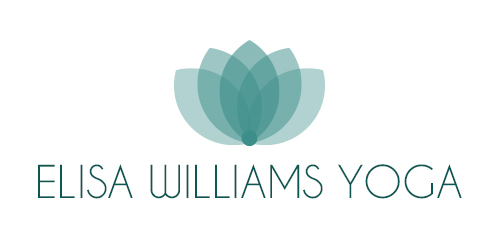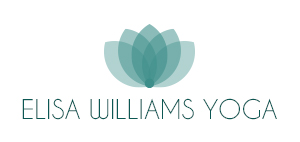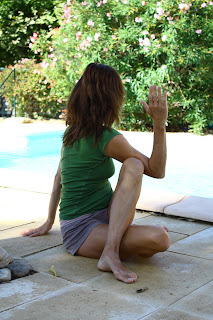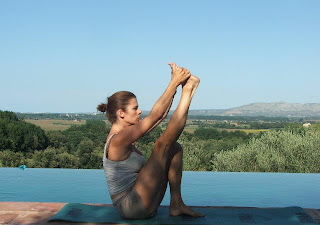Sciatica is a condition that is frequently raised by yoga students and is a very common condition with usually with two underlying causes.
Usually when their patients come to them with sciatic pain doctors often look for a herniated discs in the lumbar spine, which may be pressing against the sciatic nerve. This is a significant problem, and it’s especially important to have your discs checked out by a doctor if you are experiencing pain in your mid-lower back, painful electric shocks down your sciatic nerve, and/or tingling, burning, weakness, or numbness in your legs or feet. These can be signs that an acute herniated disc is pinching the nerve, which is a much bigger problem than sciatic pain alone.
However I have noticed that more commonly sciatica is caused by tightness in your hips primarily the piriformis – a small but significant muscle in the hip. This is often referred to as piriformis syndrome. The piriformis is one of a few small deep hip rotators that you use to turn your thigh out. It also extends your hip when you walk, and abducts the thigh (takes it out to the side) when your hip is flexed. The sciatic nerve is sandwiched between the piriformis and the small hard tendons that lie against the bone of the sacrum and pelvic bone. If as is so often the case your piriformis muscle is tight it exerts pressure on the sciatic nerve and pushes it against the tendons beneath it, which can cause excruciating pain.
The best way to tell if you are suffering from this form of sciatica are here:
Pain and a pins-and-needles sensation down the outside of your calf to the webbed skin between the smallest and fourth toe.
Difficulty walking on your heels or on your toes.
A burning sensation in the back of your thigh and calf down to your heel, with stiffness in your legs. Although in some cases this can signal a problem in the spine instead of the piriformis muscle.
Pain from sitting, accompanied by a tingling sensation at the back of your thigh. The pain may be relieved by standing, but you still experience numbness in all of your toes even when standing.
Buttock and sciatic pain from exercising or sitting for long periods of time, with or without sensations of numbness, weakness, or tingling. While the pain may appear during standing activities, it gets worse when you sit down.
Another way to tell whether you have this form of sciatica is by lying on your side with the affected leg on top and notice if it is painful in your hip to have the top leg bent with the knee resting on the floor in front of you. Then try to lift your knee away from the floor against a small amount of resistance or weight – ask someone to put a little pressure on the side of the knee with their hand. If you experience sharp pain in the hip is a sign that the piriformis may be causing the sciatica.
Yoga can help but you need to proceed with caution
If the source of your sciatica is a herniated or bulging disk, a yoga practice that progresses from gentle poses to basic poses like standing postures and downward-facing dog will align, lengthen, and strengthen your lower back. A herniated disk does not always require surgery, and yoga can help you manage and reduce the problems caused by the herniation, sometimes even reducing the herniation itself. However, it is very important for you to get you doctor to assess the severity of the herniation as some cases surgery may be required.
However if the source of your sciatica is pressure on the nerve due to a short, tight piriformis, focus on stretching this muscle. Your approach should be gentle and progressive you want to be careful not to overwork the piriformis since this may lead to spasms and deep buttock pain, sometimes accompanied by sciatic pain.
Below are some poses that target the piriformis:
Seated Twist
A simple half spinal twist (ardha matsyendrasana) gives the piriformis a mild stretch that encourages it to release and lengthen, and the intensity can be progressively increased as you approach the full pose. Stretching the muscle too aggressively can provoke sciatic pain, so it’s important to proceed carefully and make sure that both of your sitting bones are supporting you equally – sit on a block or folded blanket if necessary. You can also extend the lowest leg out in front of you.
If you don’t feel a stretch in your left hip, gently pull your left knee across the midline of your body toward the right side of your chest, keeping your sit bones equally grounded, and resist your thigh slightly against the pull of your hands. This action will help keep your sit bone grounded and increase the stretch to the piriformis.
Stay in the pose anywhere from 20 seconds to a couple of minutes, then repeat on the other side. Do two to four sets at a time. As your piriformis muscles stretch out over time, gradually decrease the height of your blankets until you can sit on the floor.
Cowface Pose
Take padding under the sitting bones if necessary and place a strap over your shoulder to take hold of between the hands if they do not meet behind your back.
Slide yours knees to the centre and stack your right knee directly over your left. (It may be helpful to come forward onto the hands and knees to align your knees). Then separate the feet and come back to sit between the feet. Bring your left arm up towards the ceiling. Bend the left elbow, bringing your left hand down the center of your back. Bring your right arm out to the right side, bend the elbow and bring the right arm up the center of your back. Hold hands behind your back or take hold of the strap or your clothing if they don’t meet.. Draw both elbows toward the center.
Progression: Keeping your spine long come into a forward bend over the less but don’t force and don’t let your sitting bones lift from the floor. You can either keep your hands connected behind your back or reach your hands forwards along the floor ahead.
Other Helpful Hip Openers
In general, sciatic pain is helped by poses that passively stretch the hip with the thigh externally rotated. See these suggested poses below but proceed with caution – always listen to your body!

Pigeon PosePigeon pose is the strongest of the piriformis stretches. Bring yourself only to the edge of the stretch, so that you can remain there, breathe, and allow the piriformis to release. Start on your hands and knees. Bring your right knee forward and out to the right. Bring your right foot forward as well, until your heel is in line with your left hip and your shin is at about a 45-degree angle. Keep your foot flexed to protect your knee. To stretch the right piriformis, lean your upper body forward, tuck your left toes under, and slide or walk your left leg straight back, allowing your right thigh to rotate out passively as your hip descends toward the floor. Keep your hips level to the floor and square to the front of the mat; don’t let your pelvis turn or fall to one side. Support your right hip with a blanket if it does not reach the floor, and remain in the pose for anywhere from several breaths to a minute. Experiment with leaning your upper body forward over your shin, and with bringing your torso more upright to vary the stretch to the hip.

If you find this pigeon pose stretch too intense or difficult, try a variation: Place your right leg up on a table and lean forward, using your hands on the table for balance, as you walk your left foot back.
Hamstring stretches also play an important role in relieving sciatic pain, because tight hamstrings can gang up with a tight piriformis to constrict the vulnerable sciatic nerve. Sciatic pain caused by a tightening of the hamstrings and surrounding muscles often comes from activities such as driving for long periods, especially when the car seat encourages a slumped or rounded posture, or during athletic activities. Down facing dog is one ( see it pictured above and also with the use of a chair) – but here are a few more suggestions.
Before coming in Savasana (Corpse pose) to complete your practice come into Apanasana (pictured below) & roll over your back muscles a few times with your head resting on the floor before bringing your head up to greet your knees in a little ball.
There are many other poses that when practiced mindfully you can progressively work into. These are just a small selection and sometimes I the photographs represent a stronger version of the pose than you will be reaching. However work to the level that is appropriate to you and proceed gently and with humility for your body.



















